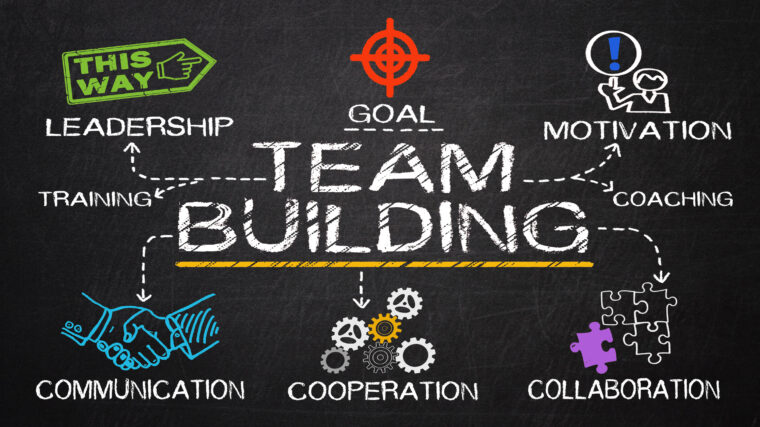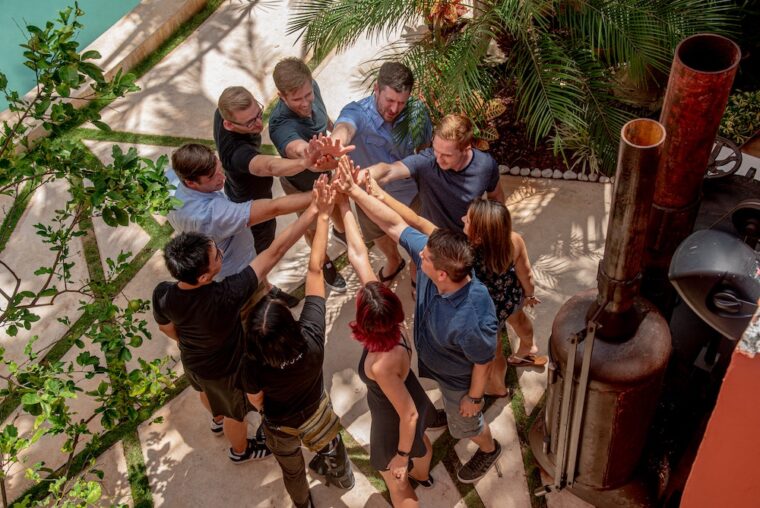In the world of business, the pursuit of cohesive teamwork is akin to mastering a symphony – each member playing their distinct note, yet blending harmoniously to create a masterpiece. Amidst the evolving strategies for fostering teamwork, the concept of integrating arts and crafts might seem unconventional, yet it’s a potent elixir for team unity.
Beyond mere finger-painting, arts and crafts offer a dynamic approach that taps into creativity, communication, and collaboration, igniting a new era of effective team building. Let’s explore the intricacies of this innovative approach and understand how it can transform teams from diverse domains into tightly-knit communities.
Benefits: Bonding, Creativity, and Improved Communication

Imagine a team where colleagues aren’t just coworkers but creative companions. Arts and crafts provide a refreshing avenue through which to bond over shared endeavors, cultivating a strong sense of unity and camaraderie. As paintbrushes stroke canvas and paper take shape, barriers melt away, allowing coworkers to connect on a personal level. This unique approach to arts and crafts team building for adults not only fosters creativity but also unlocks the potential for deeper connections among team members. Moreover, creativity flourishes as individuals explore uncharted territories of imagination, unearthing innovative ideas that can be applied to their professional roles. This newfound creativity seeps into the workplace, leading to improved problem-solving and dynamic brainstorming sessions. Enhanced communication is another perk; the camaraderie formed during these engaging creative activities naturally extends to professional conversations, making discussions more open, inclusive, and effective.
Psychological Impact: Shared Creative Experiences Strengthen Connections
Human psychology reveals that shared experiences can knit individuals together like an intricate tapestry. Engaging in arts and crafts engenders a sense of belonging as teammates traverse the creative journey together. Crafting sessions trigger the release of oxytocin, the bonding hormone, fostering a sense of trust and camaraderie. These shared experiences become a cache of memories that group members can draw upon during challenging times, strengthening their emotional bond and reinforcing their unity.
Icebreakers: Simple Craft Activities to Initiate Collaboration

Icebreakers act as the gentle breeze that unfurls the sails of collaboration. Simple craft activities, carefully chosen, serve as the perfect catalyst for igniting collaboration. From collaborative puzzle painting to creating a shared vision board, these initial steps coax individuals out of their comfort zones and encourage them to engage with one another. The act of crafting together breaks down barriers and paves the way for open conversations and mutual understanding. As participants pick up paintbrushes and sculpting tools, they unwittingly set the stage for more complex collaborative endeavors. These seemingly uncomplicated activities hold the power to transform a group of strangers into a united group, ready to tackle challenges and create something magnificent together.
Collaborative Projects: Working Together on Complex Artistic Endeavors
Once the ice is shattered, it’s time to venture into more intricate projects. Collaborative artworks like assembling a large sculpture or creating a mosaic require synergy and coordination. Just like in the professional realm, these projects demand that each team member’s contribution is essential for a magnificent outcome. The process teaches patience, adaptability, and respect for diverse perspectives, virtues that are readily transferred to the office environment. Through these creative collaborations, groups learn to function as an ensemble rather than a collection of individuals.
Communication Boost: Expressing Ideas and Solving Challenges Through Crafts

Communication is the glue that binds a team’s disparate talents. Arts and crafts act as an effective medium for expressing ideas that words might fail to capture. Visualizing concepts through crafts enables group members to comprehend complex ideas quickly. Additionally, challenges arising during artistic endeavors mirror those encountered in professional life. Tackling artistic hurdles encourages brainstorming and ideation, enhancing problem-solving skills that extend beyond the studio.
Problem-solving: Artistic Tasks Encourage Innovative Teamwork Solutions
Art is inherently problem-solving in action. Choosing colors, materials, and techniques requires thoughtful decisions akin to strategic planning in business. When confronted with artistic challenges, groups adapt, experiment, and devise innovative solutions. This creative problem-solving process transcends art, becoming a cornerstone of effective teamwork. When teams face analogous challenges in their professional roles, they can draw upon their artistic experiences, fostering a culture of adaptable thinking.
Diversity Celebration: Embracing Varied Skills and Cultural Perspectives

Teams are often a mosaic of diverse talents and backgrounds. Arts and crafts provide a platform for celebrating this diversity, allowing each member to showcase their unique skills. Whether it’s painting, sculpting, or origami, every individual’s contribution is a brushstroke that enriches the collective canvas. This celebration of diversity cultivates an environment of inclusivity, where varied perspectives are not only respected but embraced, resulting in a group that’s innovative, culturally sensitive, and open to fresh ideas.
Building Trust: Fostering Reliance on Teammates’ Strengths
Trust is the cornerstone of any successful team. Engaging in artistic endeavors nurtures a deep-seated trust among group members. Collaborating on projects necessitates relying on teammates’ strengths and delegating tasks based on expertise. This reliance translates to the professional realm, where mutual trust facilitates smoother delegation, efficient problem-solving, and effective conflict resolution. By witnessing the strengths of their colleagues firsthand, crew members learn to appreciate each other’s skills, cementing trust that stands firm even in turbulent times.
Reflection Sessions: Sharing Insights Gained from Creative Team Experiences

Just as artists step back to admire their work, groups can benefit from reflection. Regular sessions where team members share insights gained from their creative experiences provide a wellspring of learning. What was learned during the intricate weaving of a collaborative quilt? How did the process of sculpting a communal masterpiece mirror team dynamics? These reflective discussions offer a chance to connect artistic experiences to real-world challenges, providing invaluable insights that can be applied to professional scenarios.
Conclusion: Arts and Crafts as a Powerful Team-building Tool
In the grand tapestry of team building, arts and crafts emerge as a vibrant thread, weaving together bonds, creativity, and collaboration. From simple icebreakers to complex collaborative projects, every stroke of creativity nurtures unity. As groups celebrate diversity, communicate effectively, and problem-solve innovatively, they evolve into harmonious ensembles capable of orchestrating success in the symphony of business. So, next time you see a group engrossed in artistic pursuits, know that they are not merely crafting artifacts; they are weaving the very fabric of their unity.
